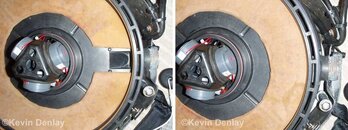Funny how everyone is bashing this women going on a dive but no one says this about Dr. Richard Harris or Dr. Craig Challen and Dr. Simon Mitchell who was part of there support team who basically went to the exact same depth. 245m in there Pearse Resurgence cave exploration project.
Hello marsh9077,
This is not an entirely unreasonable comment on a nuanced issue. However, its also a little naive in failing to point out (as others have) the substantial differences in the purposes and logistics of the respective dives. In depth record dives, depth-for-its-own-sake is the 'end' whereas on our expedition to the Pearse depth was a necessary 'means' and the 'end' was goal-focused exploration. Rightly or wrongly, these 'ends' of depth-for-its-own-sake vs exploration are usually viewed differently. We learn very little from depth record dives; we know how to dive safely and efficiently to extreme depths and its
not mixed gas bounce diving. In contrast, exploration usually answers a question of some sort, even if it is something as simple as adding knowledge about the trajectory of a cave passage.
Perhaps the most concerning effect of the glorification of depth record dives is dog whistling to the wider diving community that depth of itself is something to be strived for. This can corrupt the motivation of 'regular' divers who may progress too quickly to depths they are not ready for.
In general, exploration diving is more logistically comprehensive. That is another reason why I believe our Pearse exploration is a very poor choice of comparator for a depth record bounce dive in Boesmansgat. For example, we had four dry habitats at 40, 28, 17 and 7 m, each with its ideal gas supply and CO2 scubbers in the two shallower habitats. We had buzzer comms to 100m and voice comms to the surface in the shallow two habitats. We had unlimited suit heating power from the surface from the 40m habitat up. These and other logistic strategies allowed a very conservative 16-hour decompression, 12 hours of which was spent in the habitats. I am pretty sure those sorts of logistics were not involved in the depth record attempt being debated here.
iointerrupt:
I have not, but I'd certainly be interested in learning more if there is a link with any of the details.
Rollin Bonz:
Would love a link if one exists...Anyone?
@Kay Dee has done a good job of describing the equipment issues pertinent to the Shaw accident. He is right that the scrubber was not packed properly (being slightly empty and therefore with minimal pressure applied by the closed lid and foam pad to stop the granules from shifting). This may have created a risk of 'channelling' of gas through the scrubber with incomplete removal of CO2. The plastic mesh and moisture pad on the top of the scrubber were inverted which meant that the gas flow path was probably slightly impeded by the foam moisture pad. One issue not mentioned by Kay Dee was that the low density foam moisture pads that lie in the gas flow path underneath the scrubber had been replaced by high density felt which almost certainly increased resistance to flow. These second two problems would have increased the work of breathing and the amount of CO2 produced, potentially feeding into the scenario described below.
On the physiological side, the increased gas density and negative static lung load imposed by a back mounted counterlung almost certainly promoted a phenomenon known as dynamic airway compression which would have severely limited the ability to increase ventilation during exercise at depth - potentially to the point where it would have become impossible to eliminate the CO2 being produced by the body (to eliminate more CO2 you need to breathe more). In this scenario, one could get into a vicious spiral in which increasing CO2 drives greater but fruitless effort to breathe more, succeeding only in producing even more CO2. This was described in the paper we published describing our evaluation of the accident. I have attached a pdf of the paper. Happy to answer any questions about that.
Simon M




